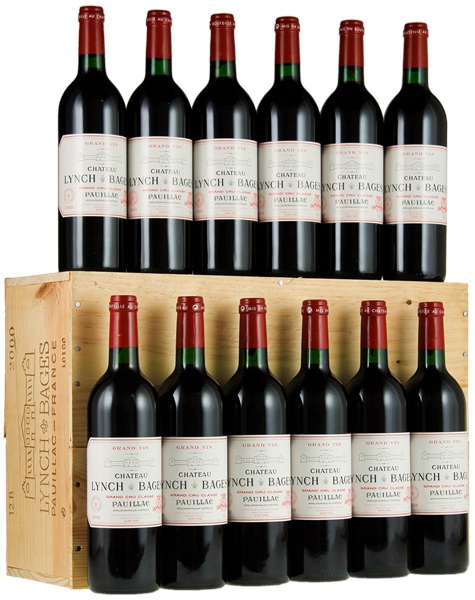See item details for bottle notes; Case condition issue
Removed from a temperature and humidity controlled wine cellar

Image above is an example. To view the image of the lot, click the item number.
Estimate

... a blossoming bouquet of blackberries, cassis, graphite and pen ink. Full-bodied with velvety tannins..., this wine is still an adolescent... One of the all-time great examples of Lynch Bages...
Gorgeous aromas of plums, blackberries and licorice, with hints of mineral. Full-bodied, with full, silky tannins and a long, long finish. Big and solid. Fantastic. If you love Lynch, you won't be disappointed.
...sumptuous rich style...With its sweet fruit, opulent but balanced wood and red and black fruit flavors...
Dense, seamless and deep, with burnished plum and tobacco flavors enlivened by very good vinosity.
Toasty and appetising. Toasty and appetising. Very appealing subtlety and complexity on the nose...